Language:
蟹
Crabs
或る時岡(鹿之助)先生が私に「信州に蟹を描く青年がいるんですよ・・・」と云われた。静物で蟹を描く画家は多いので岡先生のお話だけではよくのみこめなかった。春陽展に丸山さんの作品が出品された時、私は驚いた。それは底の浅い流行に流されずに、自分の道を切り開き、丸山さんの解釈で蟹を解体して再構築したまったく今迄にない作品だった。 (南大路一「丸山恒雄さんに捧げる」遺稿集)
One day, Mr Shikanosuke Oka told me, ‘There is a young man in Shinshu who paints crabs…’. There are many painters who draw crabs in still life, so I could not understand what Oka-sensei was talking about. I was surprised when Maruyama-san’s work was exhibited at the Shunyo-kai Art Exhibition. It was a completely unprecedented work that was not swept away by shallow fads, but rather paved its own way, dismantling and reconstructing the crab in Maruyama’s interpretation. (Hajime Minamiohji, ‘Dedicated to Tsuneo Maruyama’, posthumous collection)
四十八年の安井賞展に出品した作品で、三十八年ころから描き始めたカニをモチーフにしたものだ。日本海で捕れる紅ズワイガニだと思うが、雪の上に置かれた朱が鮮やかで美しい。色も筆致も軽快で、さわやかだ。十年近くも描き続けた他の一連のカニの作品も、快い色彩のシンフォニーを奏でている。画家の目はゆで上げられたカニの背後に。人間の日常の「生」の姿と「宇宙」を透徹していく。特にこの作品では、積み重ねられたカニの下にのぞく、うつろなカニの目から、人間的内面がにじみ出てくるように思える。(信濃毎日新聞 昭和63年10月7日 にじむ人間的内面 「三つのかに」 丸山恒雄、I)
This work, which Tsuneo Maruyama exhibited at the 48th Yasui Prize Exhibition, uses a crab motif, which he began painting around 1963. The red snow crab, which is thought to be from the Sea of Japan, is beautiful and vivid in vermilion set on a bed of snow. The colours and brushwork are light and fresh. The other series of crab works, which he has been painting for nearly a decade, are also a pleasant symphony of colours. The artist’s eye penetrates the ‘life’ of human daily life and the ‘universe’ behind the boiled crabs. In this work in particular, the human inner life seems to be oozing out from the eyes of the crab peeping out from under the piles of crabs. (Shinano Mainichi Shimbun, 7 Oct. 1988, ‘Three crabs’, Tsuneo Maruyama, I)
作品F100号(1966年)を見てもわかるように、この大きな動きと足1本1本に表現された遠近は、剛直で細心な画家の内面を素直に描きだし、 (田中康夫「ぎりぎりの気魄を塗りこめて」『遺作六人展』)
As can be seen in the work F100 (1966), this large movement and the perspective expressed in each crab leg honestly depicts the rigid and meticulous artist’s inner life (Yasuo Tanaka, ‘Painting over the spirit of the last minute’, Six Artists’ Posthumous Exhibition Collection).
過去の仕事をすてて、あの境地に達するにはどんなに苦しんだか剛毅と細心の丸山さんが話していて絶句された。(南大路一「丸山恒雄さんに捧げる」『丸山恒雄遺作集』)
I was immensely impressed when Mr Maruyama, a rigid and meticulous man, talked about how much he had suffered to reach that state of being after abandoning his past work. (Hajime Minamiohji, ‘Dedicated to Tsuneo Maruyama’, posthumous collection.)
丸山さんと言えば蟹、蟹と言えば丸山さん。それほど蟹は丸山さんのよき画題であった。丸山さんの蟹は丸山さんの手によって生れ変り、捨象され尽したと言っても過言ではあるまい。その朱色はわけても美しいが、そこには岡鹿之助先生のお好きだった白が深くかかわっているように思えるのだがどうであろうか。(丸山恒雄遺作展を見て(上)だいひつ館主人『信濃民報』)
When people think of Mr Maruyama, they think of crabs, and when people think of crabs, they think of Mr Maruyama. Crabs were such a good subject for Mr Maruyama’s paintings. It is no exaggeration to say that Mr Maruyama’s crabs were born again and discarded by his hand. The vermilion is beautiful in its own right, but it seems to me that the white colour favoured by Mr Shikanosuke Oka is deeply involved. (the owner of Dahitsu-kan, After viewing the exhibition of Tsuneo Maruyama’s posthumous works Part I)
妖艶な炎を感じさせるこの作品は絶筆となった「海岸」と構成がよく似ている。複雑につみ重なった蟹を心の操作によってピラミッド形に構成、その効果は強烈なコントラストを生みだす。(田中康夫「丸山恒雄」『長野県美術全集7 地域に花開く洋画の世界』)
This work, which evokes a mysterious fire, is very similar in composition to the enduring ‘ Seashore’. The intricately layered crabs are composed into a pyramid shape by mental manipulation, and the effect creates a strong contrast. (Yasuo Tanaka, ‘Tsuneo Maruyama,’ Nagano Prefecture Art Collection 7, The World of Western-style Painting Blossoming in the Region)
私は最近、グスタフ・クリムトの展覧会で傑作といわれる「ダナエによる」「ユーディットによる No. 2」の二枚の油絵を見たが、画因がカニとエロスの女と違うが造型理念(方法、精神、油絵の発色等)が今世紀の頭初と終りが似ていることに気付いて、丸山さんのありように付いて考えさせられた。人の好みによるが私は丸山さんのロココ趣味(みせびらかし)のようなものが余り好きではなかったが。クリムトの芸術がユーゲントシュティール(装飾感覚)、ロマン主義等によって形成されているといわれるが、その意味が丸山芸術にあてはめると今更ながら彼の仕事が現代絵画に提出しているものに触れ混迷解決の鍵のな辺を領づいている自分に気付きました。(沓掛利通「弔辞」『春陽』 No.52 )
I recently viewed two oil paintings, often regarded as masterpieces, at a Gustav Klimt exhibition: Danaë and Judith II. Although the themes—Danaë and Judith—differ in their portrayal of women as symbols of eroticism and strength, I noticed that the conceptual approach (method, spirit, colour rendering in oils, etc.) bears similarities between the beginning and the end of this century. This observation led me to reflect on Mr. Maruyama’s approach. Personal taste varies, and I must admit, I was not particularly fond of Mr. Maruyama’s Rococo-style ostentation. It is said that Klimt’s art is shaped by Jugendstil (Art Nouveau) and Romanticism, and applying that lens to Maruyama’s work, I find myself now realising just how much he offered to contemporary art. His work seems to hold the key to unlocking the confusion and challenges in modern painting. (Toshimichi Kutsukake, Eulogy, Shunyō No. 52, 10 March 1986)
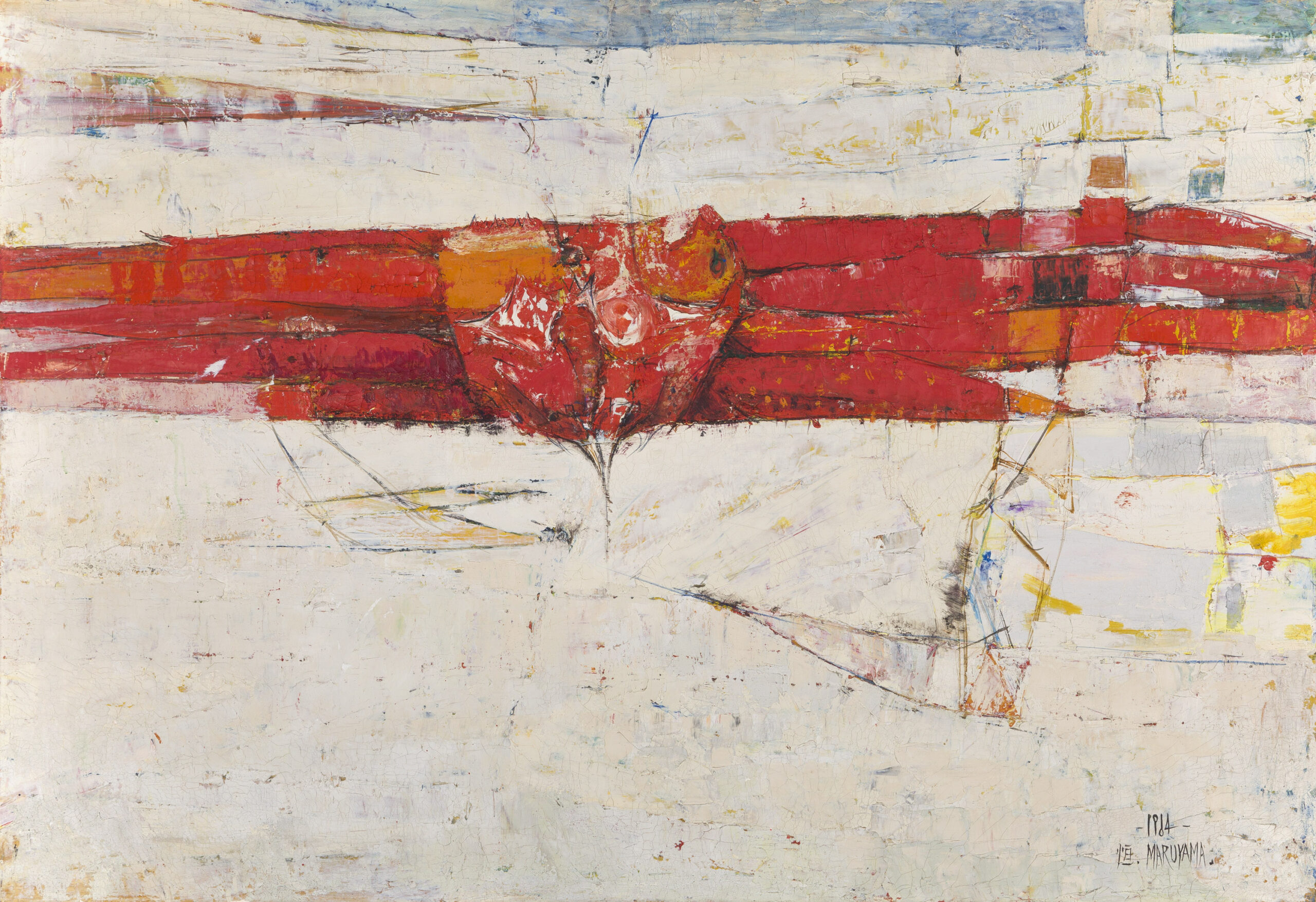 蟹 1964 第41回春陽展 P50 上田創造館所蔵
蟹 1964 第41回春陽展 P50 上田創造館所蔵
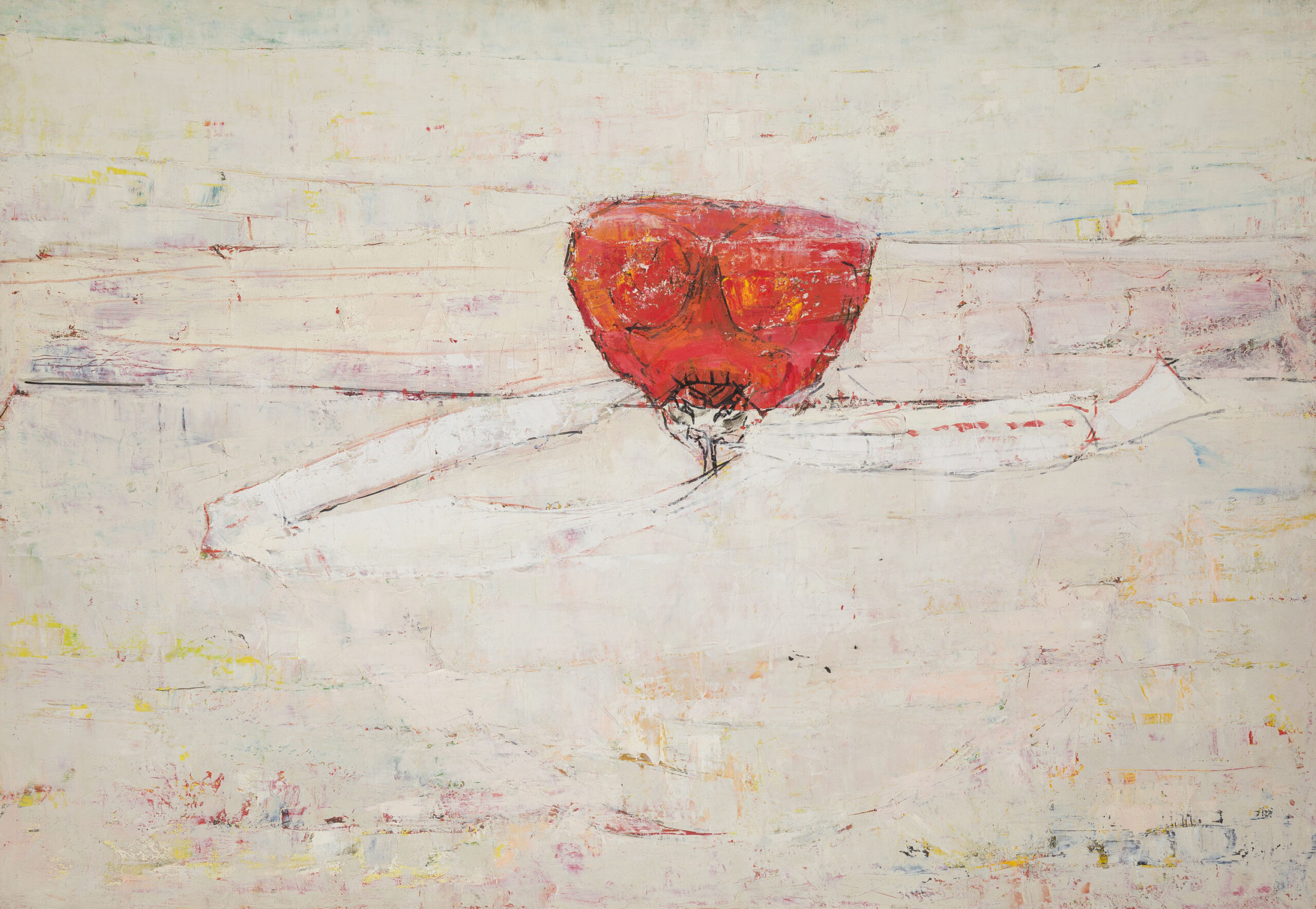 赤 1965 第42回春陽展 F50
赤 1965 第42回春陽展 F50
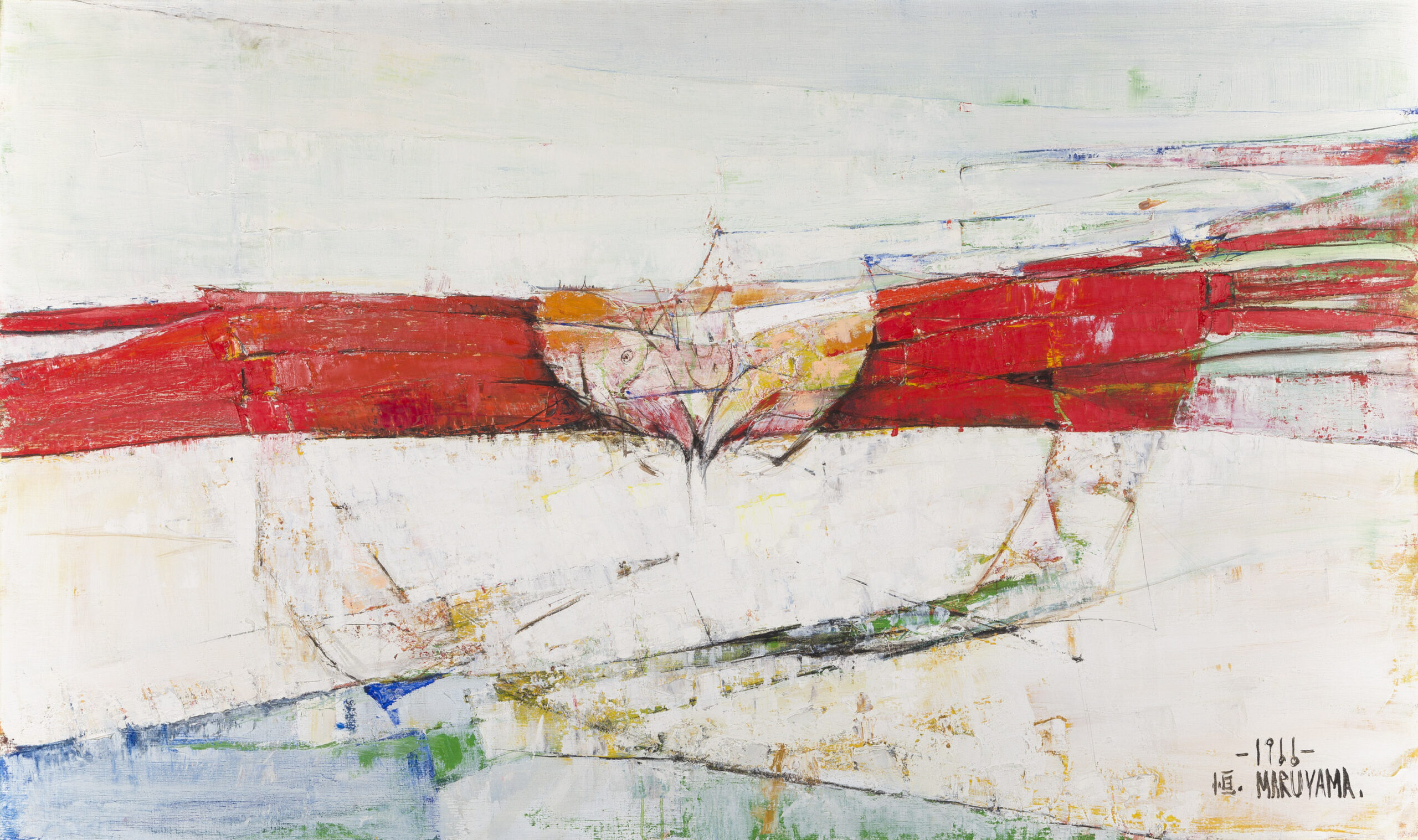 カニ 1966 第43回春陽展 F100 上田創造館所蔵
カニ 1966 第43回春陽展 F100 上田創造館所蔵
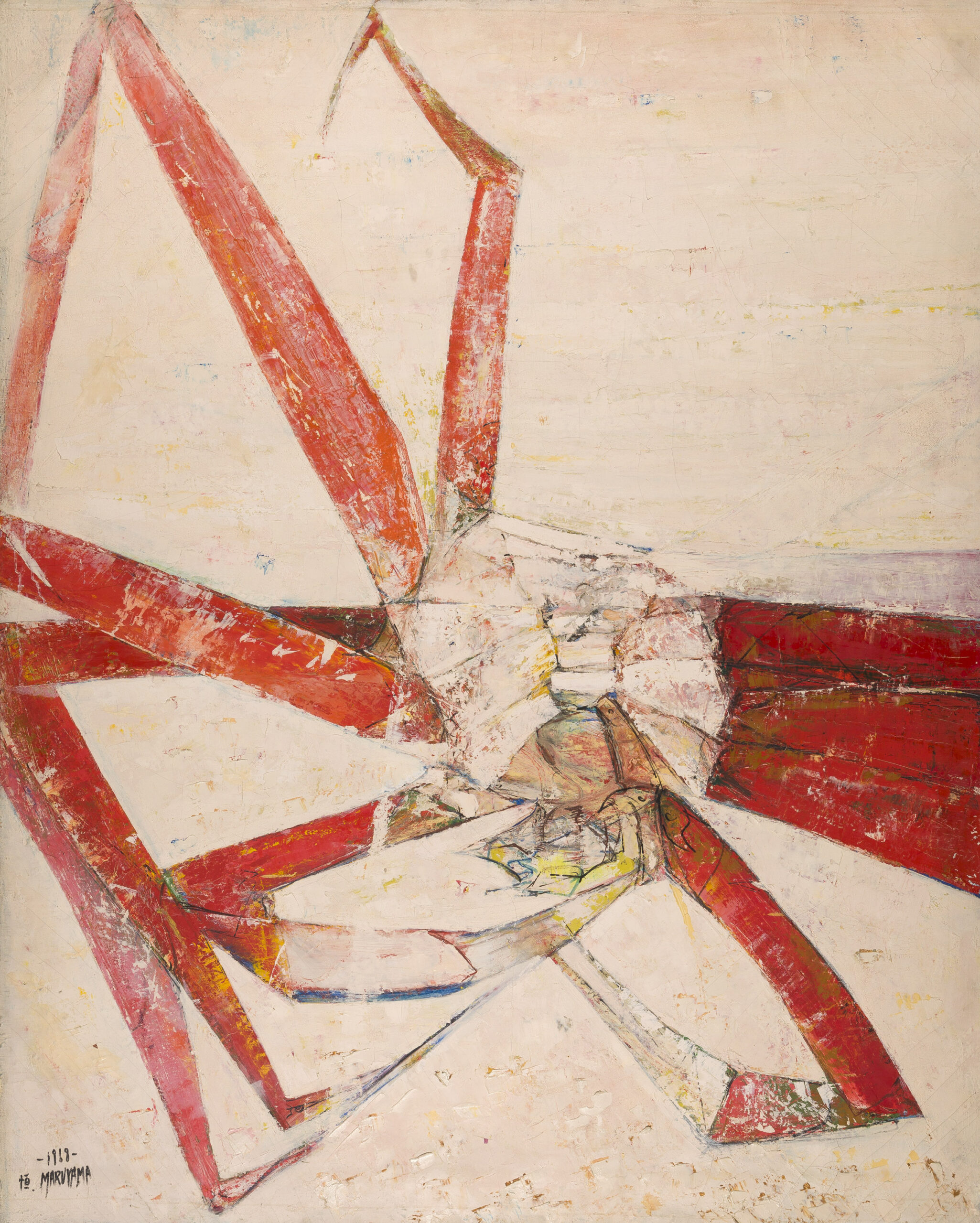 蟹(ける)1968 第45回春陽展 F100
蟹(ける)1968 第45回春陽展 F100
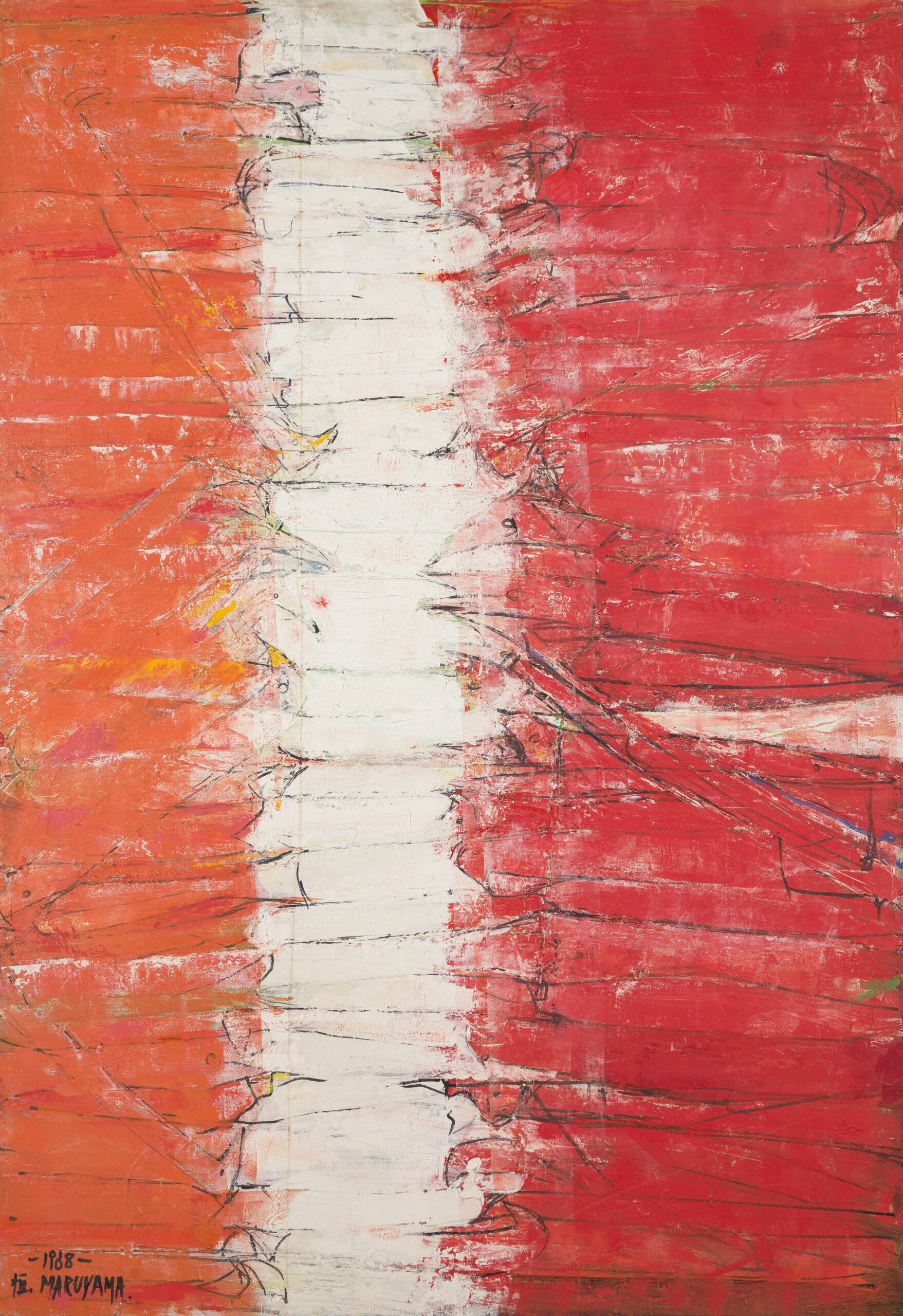 対 1968 第45回春陽展 P50
対 1968 第45回春陽展 P50
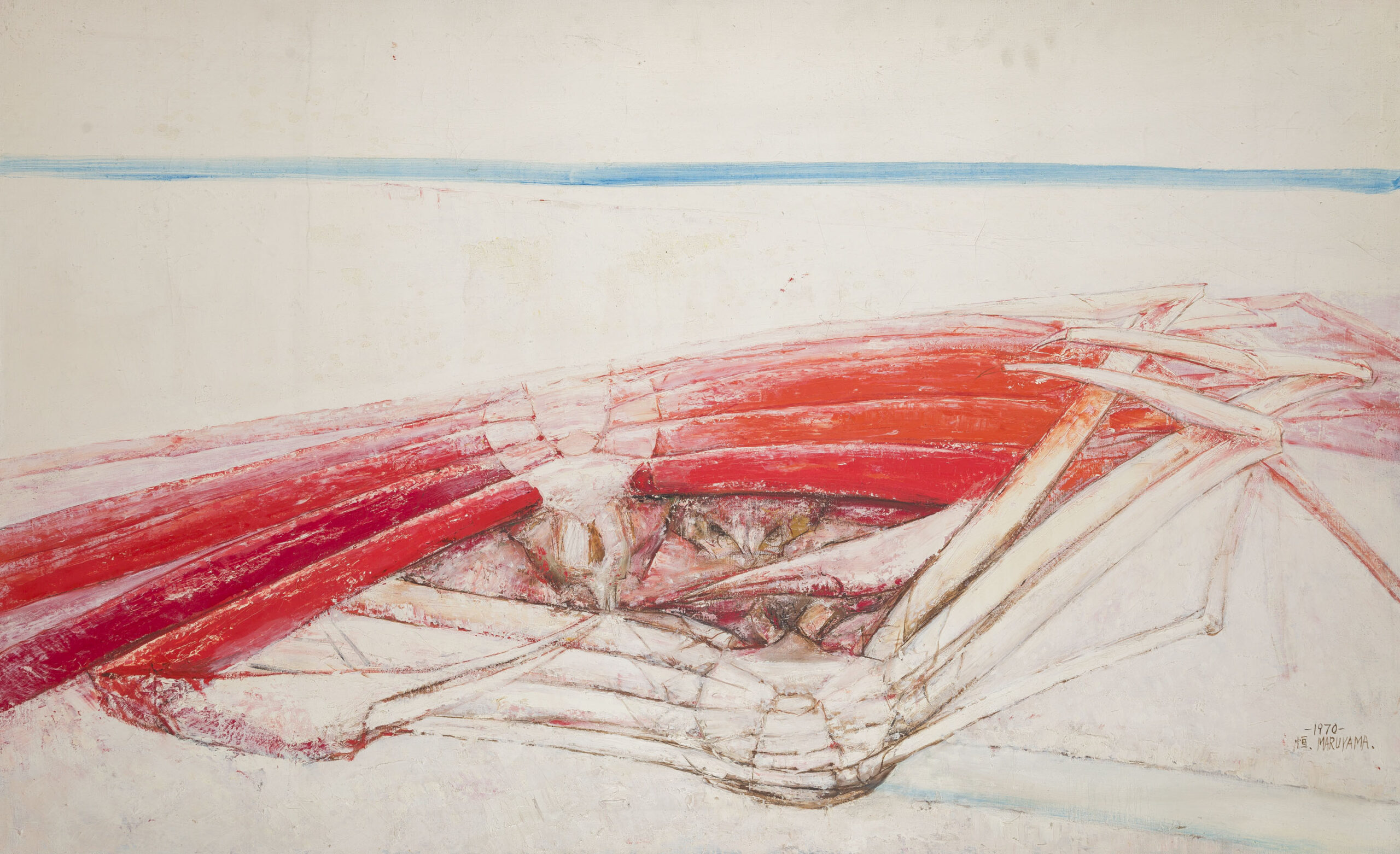 蟹 1970 第47回春陽展 P50
蟹 1970 第47回春陽展 P50
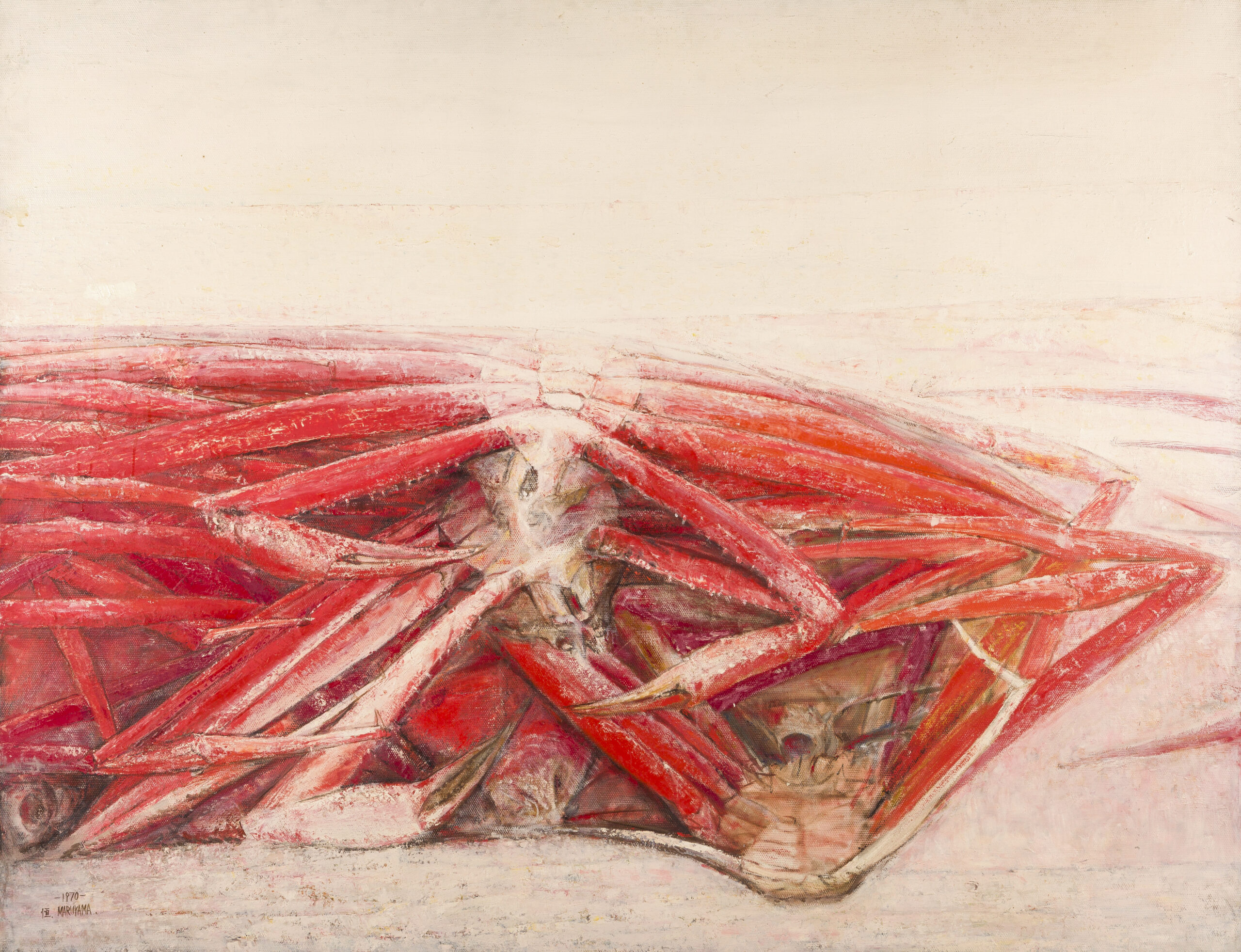 蟹 1970 第47回春陽展 F80
蟹 1970 第47回春陽展 F80
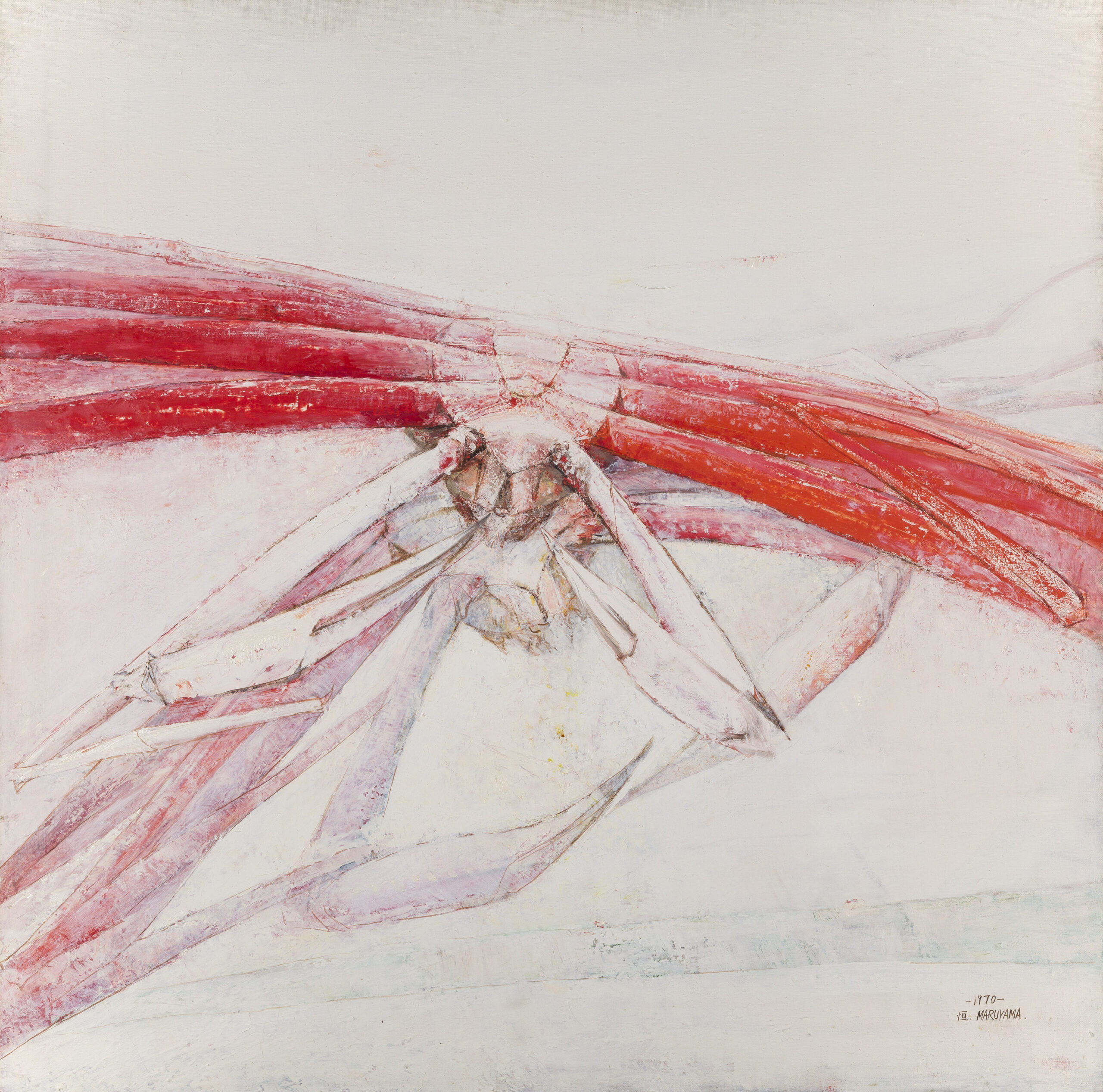 カニ 1970 第47回春陽展 S50 上田創造館所蔵
カニ 1970 第47回春陽展 S50 上田創造館所蔵
 風景(ひらく)1971第48回春陽展 安井賞展出品 F100 上田創造館所蔵
風景(ひらく)1971第48回春陽展 安井賞展出品 F100 上田創造館所蔵
 三つのかに 1973第48回春陽展 安井賞展出品 第63回春陽展 P80
三つのかに 1973第48回春陽展 安井賞展出品 第63回春陽展 P80
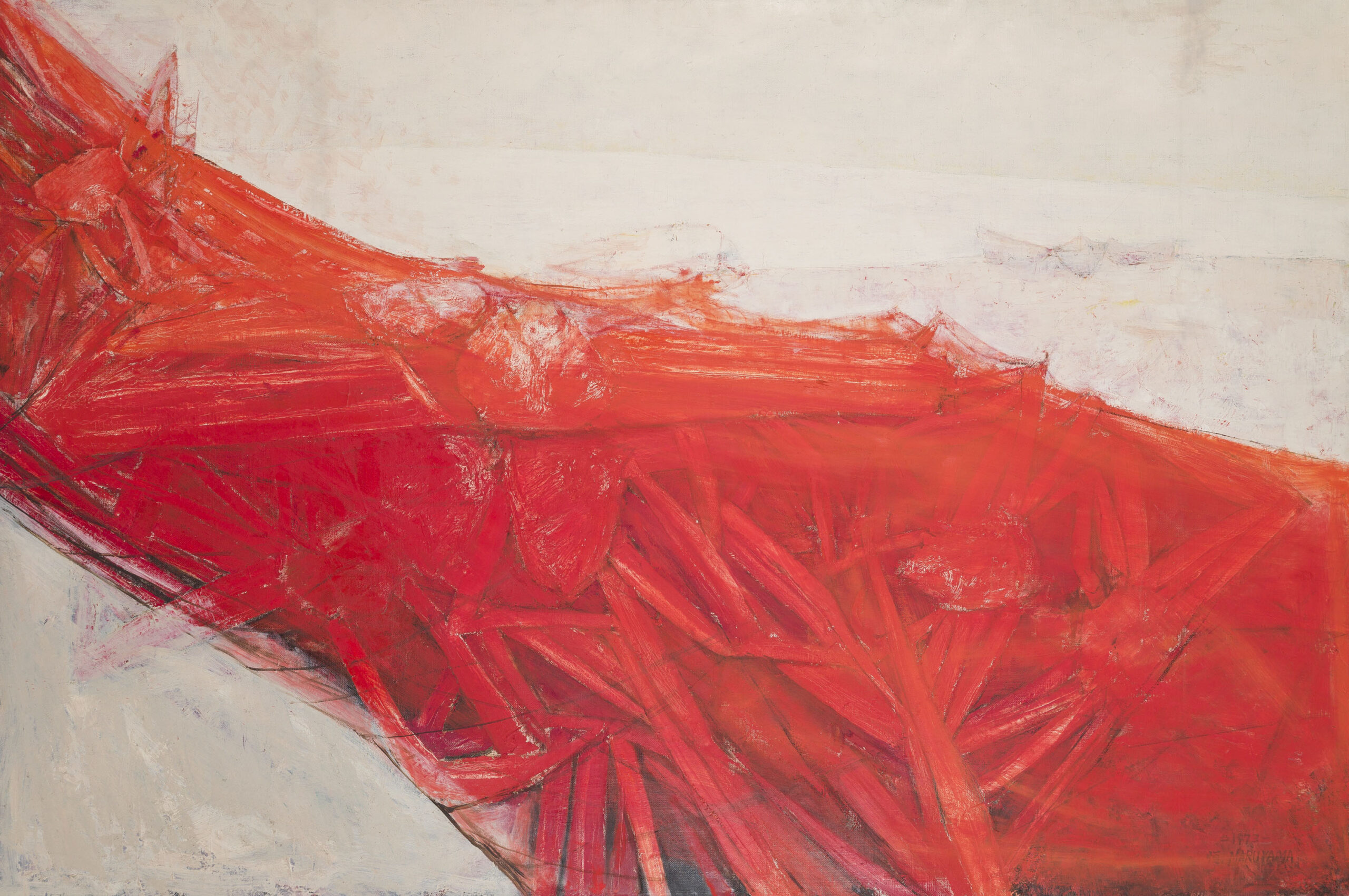 潮騒 第50回春陽展 1973 P80
潮騒 第50回春陽展 1973 P80
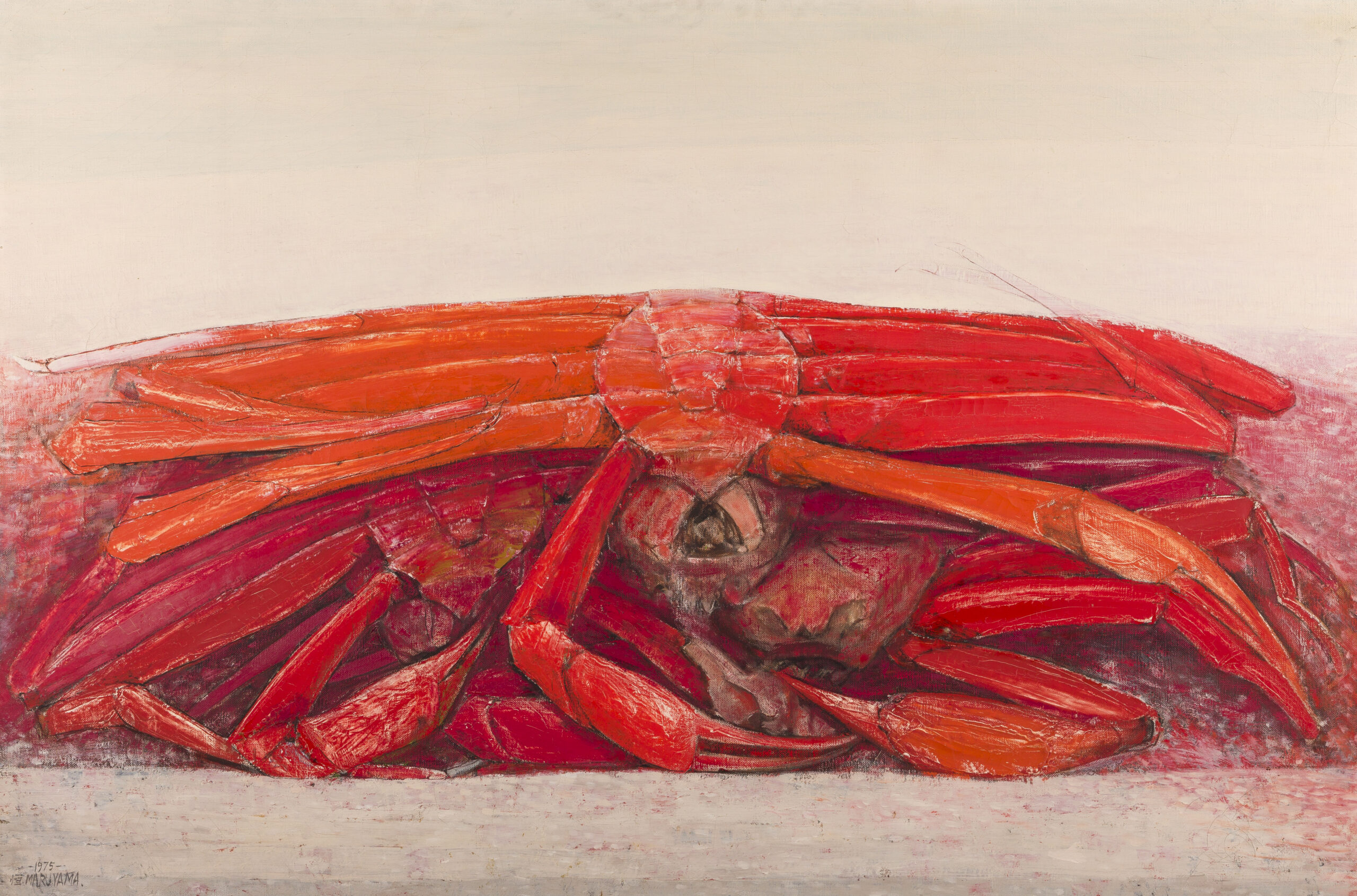 三つの蟹 1975 第52回春陽展 P80
三つの蟹 1975 第52回春陽展 P80
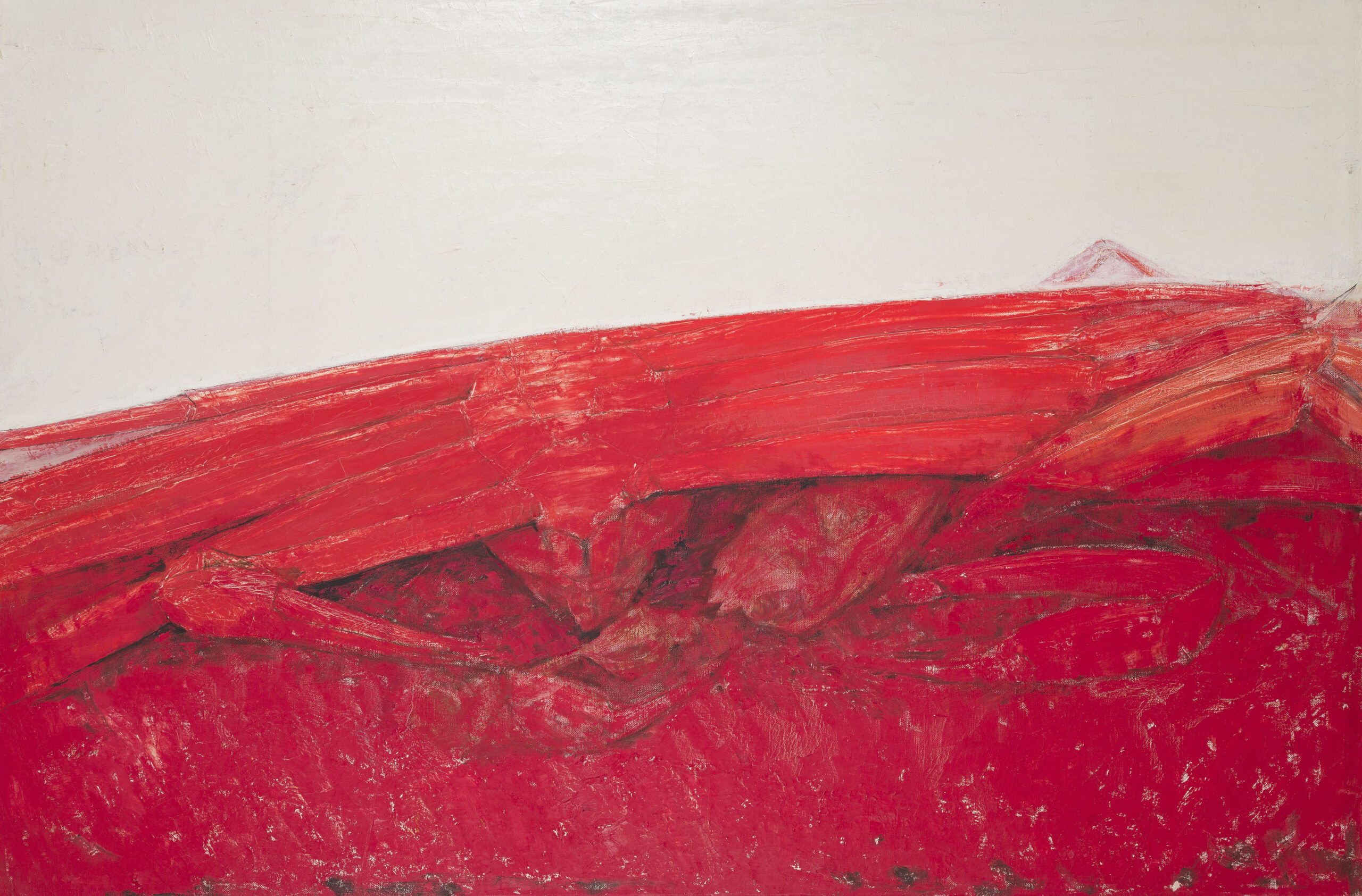 蟹 1976 第53回春陽展 P80
蟹 1976 第53回春陽展 P80
 蟹のコンポジション 1977 第54回春陽展 S50
蟹のコンポジション 1977 第54回春陽展 S50
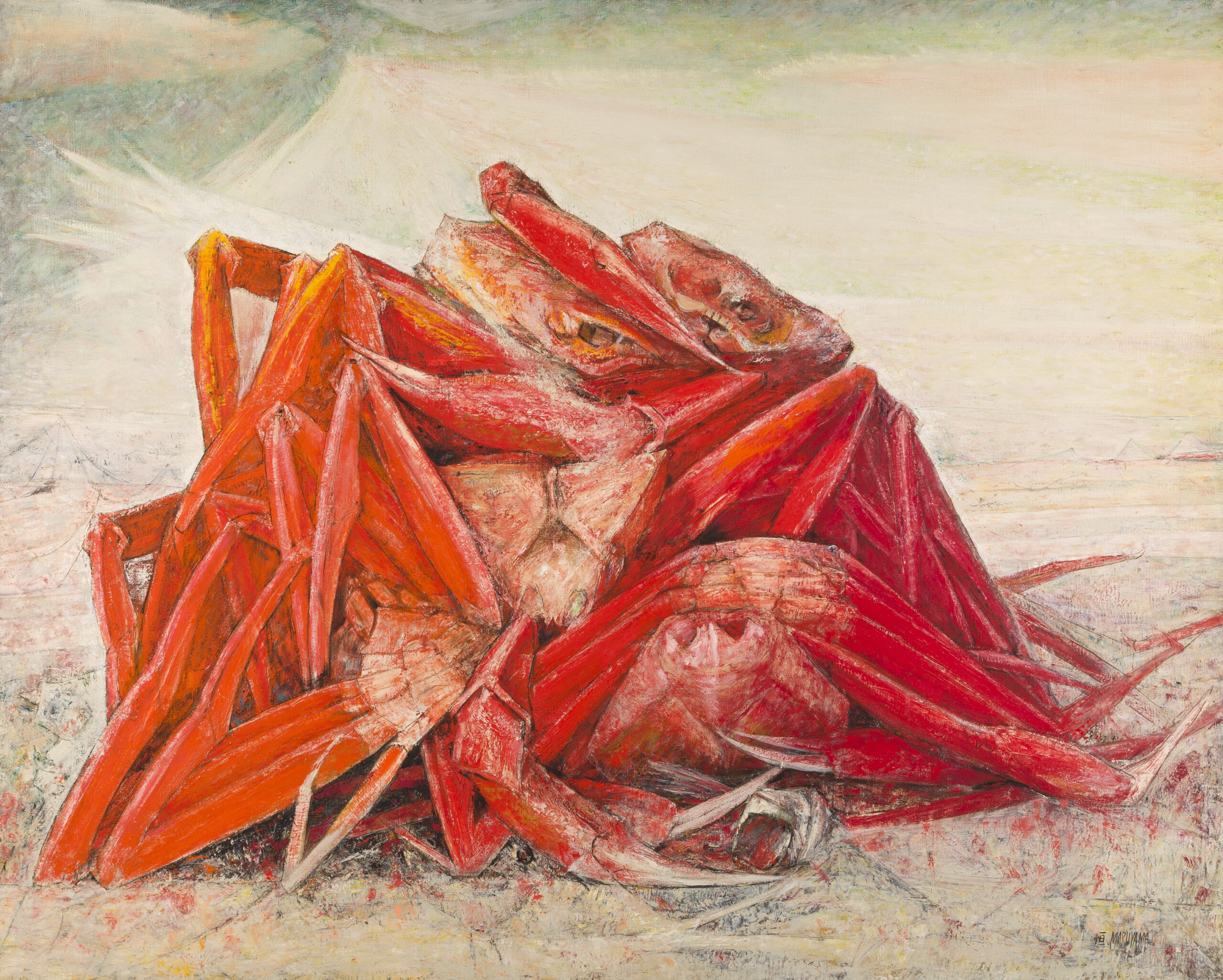 集積 1979 第63回春陽展 F100
集積 1979 第63回春陽展 F100
